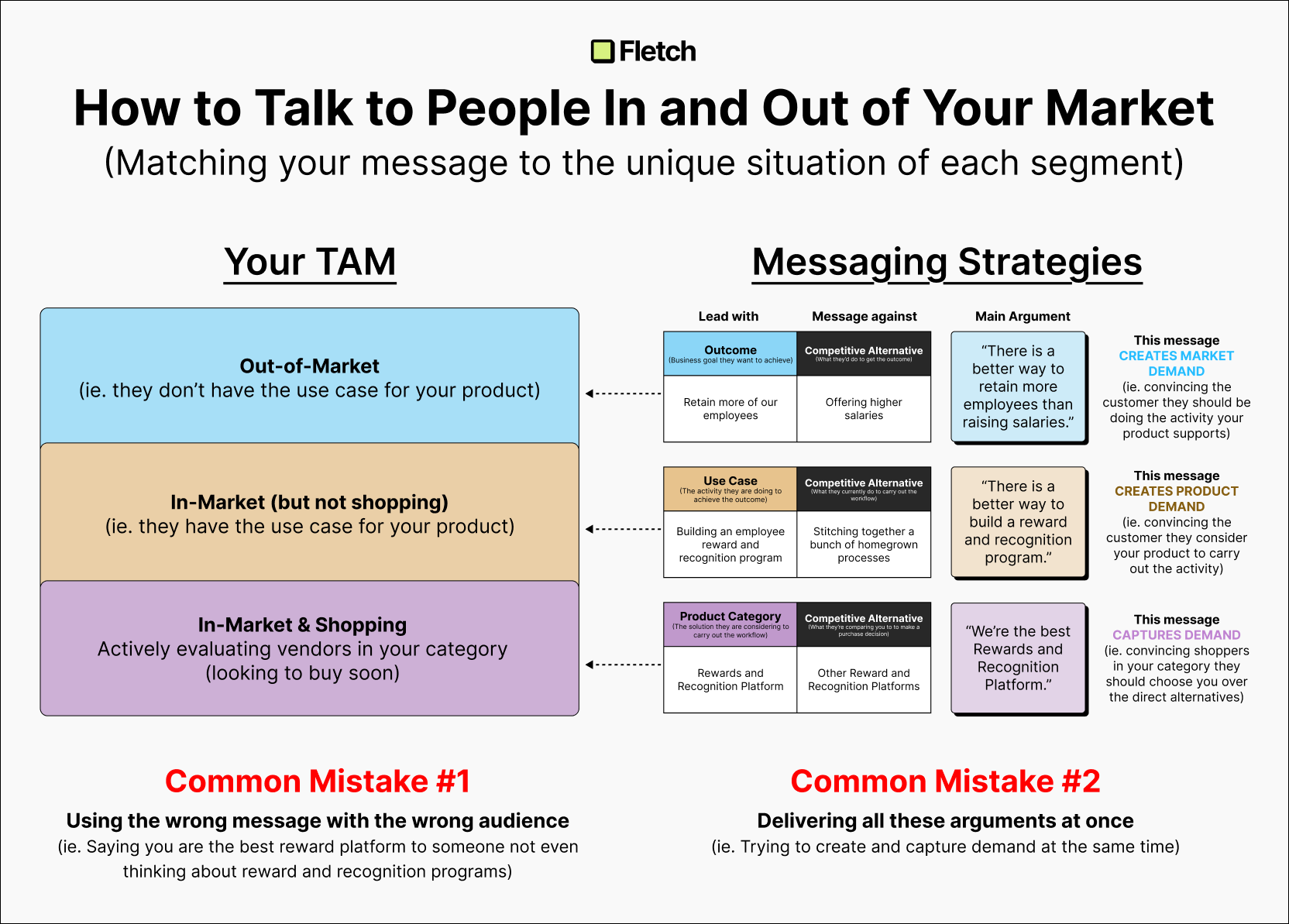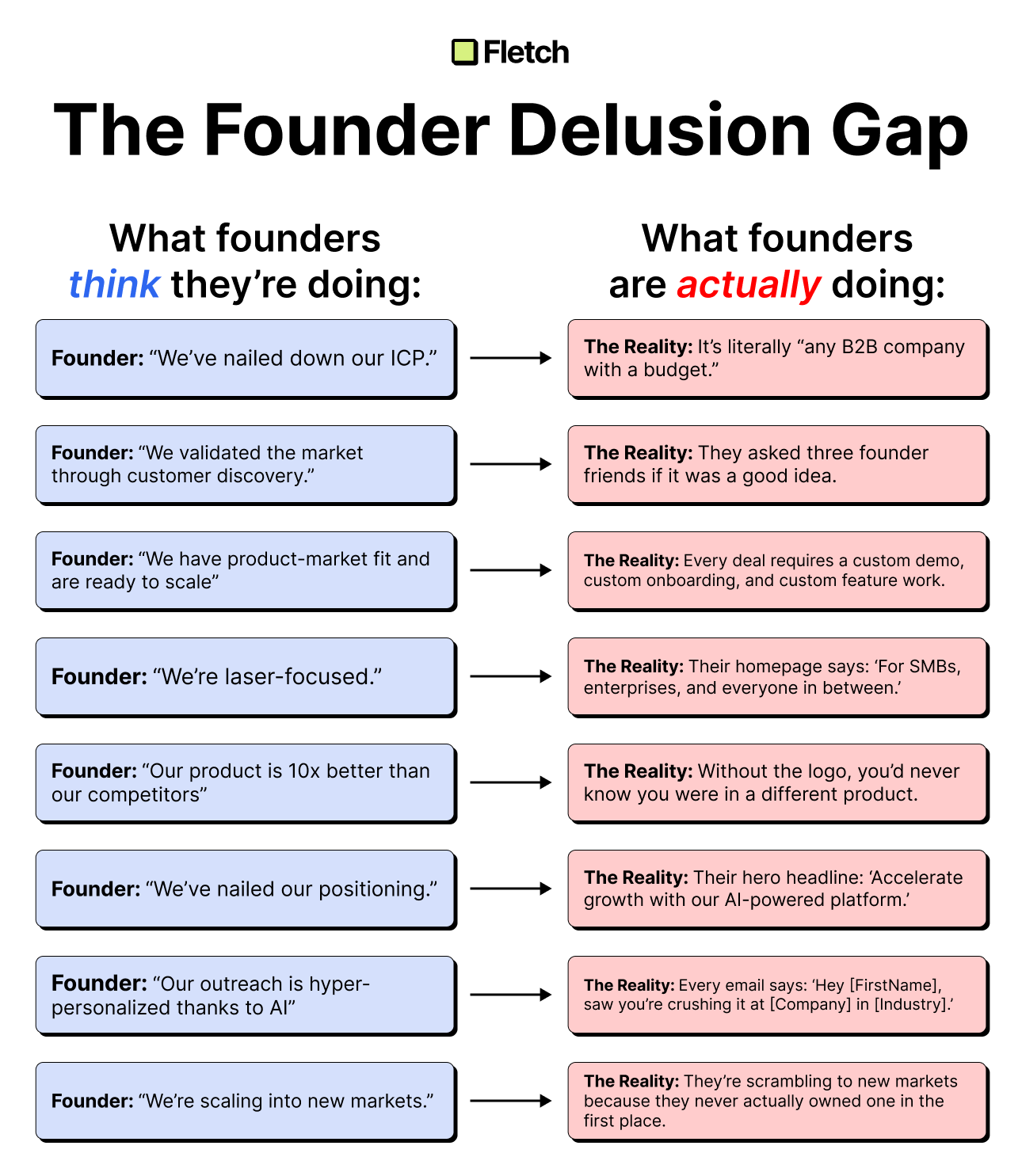Headline Webpage Audit

Your startup’s web page headlines need to carry your core product message…
Why?
❌ Because visitors don’t read your whole site.
⏩ They skim the headlines.
Here is a simple exercise to test your web page headline messaging.
↳ And will help improve your website product messaging 💪
Using Fletch PMM’s Messaging Elements
⚫🔴🔵🟢🟠🟣🟡🟢
1️. Grab all the Headlines off your page
2. Categorize each message using these questions to guide you:
Product Category 🟣 → What is the product?
Capabilities 🟠 → What does the product do for a user?
Feature 🟢 → These are what powers the capabilities.
Benefits 🔵 → What is the outcome of using the feature + capability?
Use Case ⚫ → What is the persona trying to do with the product?
Problem 🔴 → What limitations does the user run into carrying out the use case the "old way"?
Persona 🟢 → Who is the target audience? (team, champion, use)
Company Type 🟡 → What business situation are these personas in? (industry, business model, size)
3️. Assess the clarity
If you only read these headlines, would you know:
↳ what these products do?
↳ who they are for?
↳ what specific value they provide?
______
If we take a look at the marketing landing pages for both Asana and Calendly...
👀 We start to see that one of them is much more effective.
↳ Calendly!
Why?
Primarily because they've led with clear capabilities.
This sets an anchor point of what the product actually does — and makes it easier to see how a target user (marketing team) could get value from it.
Asana on the other hand is mostly messaging on high level benefits and features.
This makes things a bit more fuzzy — I wouldn't be able to tell a friend or colleague anything about the product after reading these headlines.
So if you're a startup marketer working on your web page messaging, remember...
👉 You can't expect your prospect to read your entire site.
🔥 So your headlines need to carry your product message.

Ben Wilentz
Founder, Stealth Startup





